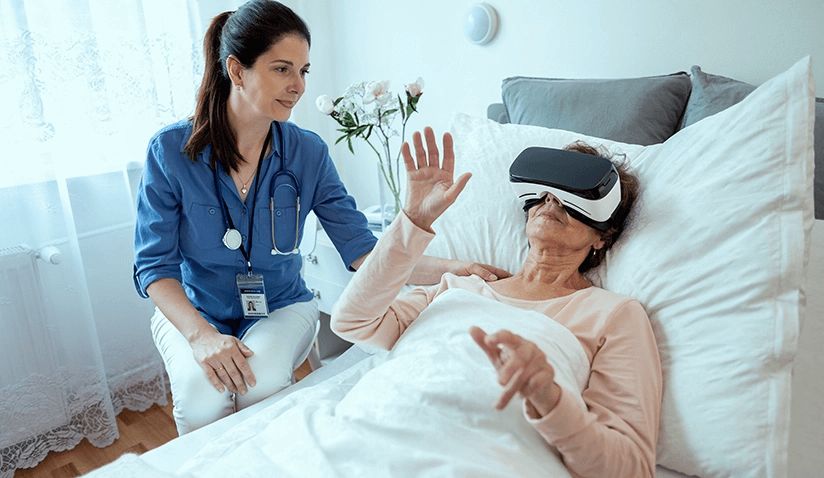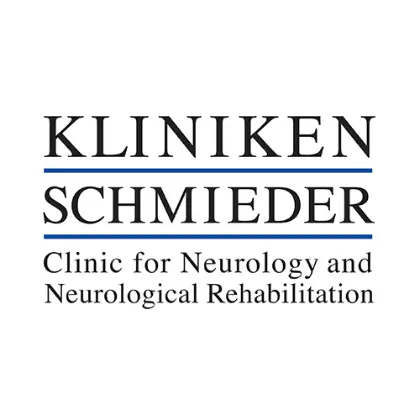The Power of Therapy in Neurorehabilitation: Types, Benefits, and Innovations

Therapy is crucial for neurological rehabilitation. It helps individuals battling neurological conditions become more independent and regain skills needed for everyday activities like washing, dressing, cooking, communicating, and writing.
Different types of therapy – such as physiotherapy, occupational therapy, recreational therapy, and speech therapy - can help patients with neurological conditions train these skills.
Various rehabilitative treatment options are incorporated to formulate a customized therapy plan for each patient, factoring in their unique needs and the severity and stage of the neurological condition.
The goal of rehabilitation is to help patients regain their independence and improve their quality of life.
What Is Therapy in Neurorehabilitation?
Neurorehabilitation is a specialized program that helps people with nervous system diseases and injuries recover certain functions. It is advised for individuals with neurological disorders and those recovering from a brain injury, stroke, or surgery.
The program might include physiotherapy, psychological therapy, occupational therapy, vision therapy, or speech and language therapy.
Rehabilitation aims to create a tailored rehabilitative treatment plan for each patient to improve motor function, cognition, communication, and independence.
Why Is Therapy So Important During Neurorehabilitation?
Therapy is vital during neurorehabilitation and offers multiple benefits, as listed below:
- Maximizing recovery: It helps people recover better and faster from neurological conditions by focusing on physical, cognitive, and emotional well-being.
- Regaining independence: It supports individuals in adapting and becoming independent during neurological rehabilitation.
- Rewiring the Brain: It helps create new brain connections that could improve patients’ movements and thinking.
- Emotional Support: It provides a safe space for individuals to express their emotions, develop coping mechanisms, and receive support from specialists.
- Personalized Care: It is tailored to each individual's needs and addresses their unique challenges and goals.
By combining these elements, therapy helps patients regain function, become independent, and reintegrate into society after a neurological trauma or disease.
What Is Involved in Tailoring a Therapy Program for Neurorehabilitation?
Initially, specialized practitioners evaluate the patient’s physical and cognitive abilities to assess the diagnosis and therapeutic needs. Medical professionals are also involved in the diagnostic process to ensure a comprehensive review of the patient's history and incorporate appropriate medical therapy. They will then refer to a neurorehabilitation professional who will work closely with the patient and their loved ones to set goals and create a personalized rehab therapy plan.
Your treatment may involve collaboration with physiotherapists, occupational therapists, speech therapists, neurologists, and neuropsychologists. They will collaborate to enable you to achieve the best possible recovery.
Your sessions may include targeted exercises, specific training, and advanced technology to improve your physical and cognitive abilities. Depending on the patient’s condition and progress, medication might also be prescribed to enhance the effects of therapy. You will also receive emotional support throughout your rehabilitative therapy.
The healthcare team also conducts regular assessments to track your improvement and make any necessary adjustments to your plan.
Which Types of Therapy Are Available during Neurorehabilitation?
The range of neurological rehab therapy options available to address different aspects of recovery and improve overall function include the following.
Physiotherapy and sports therapy
Patients receive physiotherapy (exercises, stretches, and new therapy techniques) to improve physical abilities such as movement, strength, balance, and coordination.
Sports therapy also enhances physical abilities through sports-related activities and exercises.
Physical therapy might also include:
- Massage therapy: Massaging the body's soft tissues to promote relaxation, reduce muscle tension, improve blood flow, relieve pain, and enhance range of motion.
- Lymphatic drainage therapy: Stimulating the lymphatic system to reduce swelling and improve circulation.
These specialized physical therapy techniques complement other interventions in neurorehabilitation, providing targeted relief and support during the recovery process.
Occupational therapy
Occupational therapy aims to improve a person’s ability to carry out everyday activities and regain independence. It focuses on improving personal skills related to self-care, work, and leisure.
Occupational therapists focus on cutting-edge techniques that help improve therapy outcomes. These strategies include:
- Sensory integration therapy (playing with different textures, experiencing various sounds and smells, and engaging in movement-based exercises)
- Cognitive rehabilitation (using interactive computer-based programs, apps, or digital platforms)
- Lifestyle redesign (adopting healthier habits and managing stress)
Speech/Language therapy
Speech and language therapists use advanced exercises and methods to improve communication in patients with language impairments such as aphasia.
They also address swallowing problems by teaching safe swallowing techniques.
Clinical neuropsychological therapy
Neuropsychological therapists assess cognitive functions such as memory, attention, and problem-solving and provide interventions to improve these abilities.
They also offer strategies for emotional regulation and coping skills to enhance overall psychological well-being.
Rehabilitation pedagogics
Rehabilitation pedagogics involve adapting teaching methods, offering educational support, and creating a nurturing learning environment for patients with neurological conditions.
By tailoring education to patients’ needs, rehabilitation pedagogics enhance cognitive development, learning abilities, and overall functioning.
Medical therapy
Medical management is a vital component of neurorehabilitation. A team of medical professionals, including neurologists, is involved in the therapeutic process, ensuring proper diagnosis through meticulous history-taking, imaging, and investigations to identify causative factors and utilizing medication to enhance treatment efficacy. Medical therapy works in step with the stage of rehabilitation and disease progression, factoring in the dynamics of the patient's recovery, potential complications, and requisite interventions and adjustments to medication.
Other therapies
In addition to the above, other essential forms of therapy included in neurorehabilitation programs are:
- Social therapy: This involves assessing the social needs of the patient, providing counseling, and connecting patients with community resources for support during their rehabilitation journey.
- Sports for disabled individuals: Sports therapists specialize in helping individuals with neurological difficulties engage in sporting activities designed for their needs.
- Recreational therapy: Recreational therapists use enjoyable activities such as art, music, sports, and games to promote well-being and enhance the overall experience of individuals with neurological conditions.
- Therapy for sleep disorders: Neurorehabilitation specialists work closely with patients to identify and address sleep issues such as insomnia, sleep apnea, or disrupted sleep patterns.
- Neuro-medical and neurosurgical intensive care: A healthcare team closely monitors and manages the neurological well-being of patients, ensuring optimal brain function and stability.
- Acute stroke treatment: Healthcare professionals focus on minimizing brain damage and maximizing recovery opportunities for stroke survivors.
- Immunosuppressive, cytostatic, and pain therapy: This involves specific treatments to control the immune system, combat cancer cells, and manage pain by creating a conducive environment for neurorehabilitation. Pain therapy aims to make patients more comfortable, enabling them to actively participate in their rehabilitation.
- Innovative therapies: New therapy techniques incorporate advanced methods and technologies to improve rehabilitation outcomes. These include Lokohelp gait training, Mirror therapy, Constraint-Induced Movement Therapy (CIMT), The Vector system, Virtual reality (VR), and feedback-guided devices like Pablo and Armeo.
- Treatment after COVID-19: Neurorehabilitation therapy for individuals recovering from COVID-19 focuses on addressing complications such as cognitive impairments, motor deficits, fatigue, and respiratory problems.
How Long Does Therapy Take for Common Conditions Requiring Neurorehabilitation?
The length of therapy can vary for each person and depends on several factors, including:
- How early do they start neurorehabilitation therapy
- The type and severity of the neurological condition
- How well someone is progressing and their personal goals
Some people may only need therapy for a few weeks, while others with more complicated conditions may require it for many months or years.
Your progress will be monitored by your neurological rehab therapy team, and changes to your treatment plan will be made as necessary to ensure optimal outcomes.
Final Thoughts
Therapy stands as a powerful ally in neurorehabilitation, bringing hope and improvement to those facing neurological conditions.
Through different types of therapy, patients can regain their abilities, overcome challenges, and lead more independent and fulfilling lives.
With the help of innovative therapies and dedicated healthcare professionals, the path to successful neurorehabilitation is more promising than ever.

As pioneers in Neurological Rehabilitation since 1950, Kliniken Schmieder has set new medical standards utilizing the latest therapeutic innovations in areas such as physiotherapy, occupational therapy, recreational therapy, and new feedback-guided devices for the upper extremities. The group specializes in comprehensive Neurological Rehabilitation, starting with managing acute neurological illnesses, such as epilepsy and encephalitis, Early Rehabilitation of patients recovering from traumatic brain injury or stroke to Post-Primary Rehabilitation. Depending on the patient's condition, recovering basic functions, achieving independence in activities of daily living, or relearning to swallow or speak are some of the program's goals. Annually, over 14,000 patients from across the world, in all stages of acute and rehabilitative recovery, benefit from their expertise in neuro rehab. Currently, Kliniken Schmieder operates a network of six cohesive clinics across Germany, which have earned global recognition as Centers of Excellence in Neurorehabilitation.
Sources:
Featured Blogs



